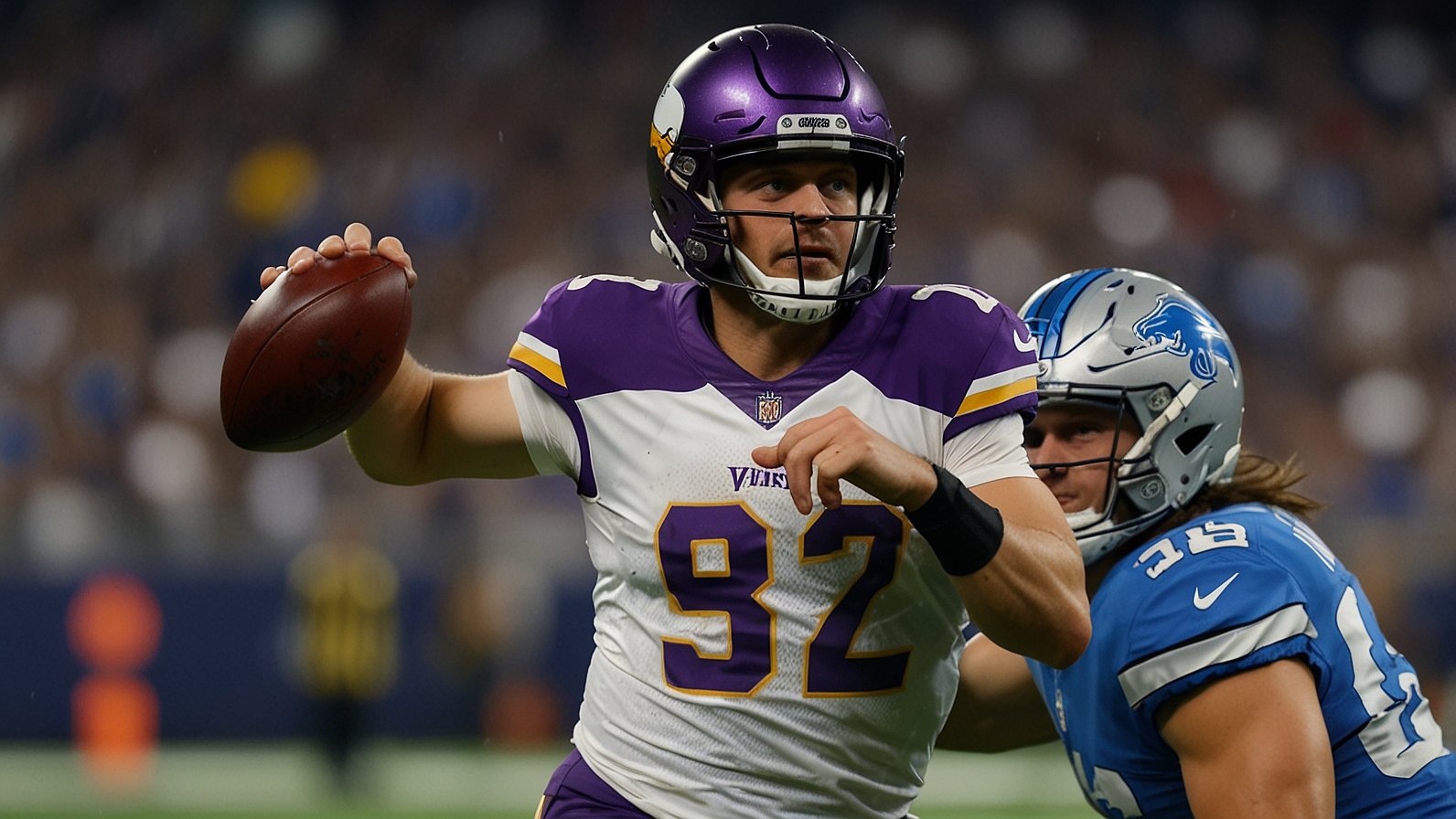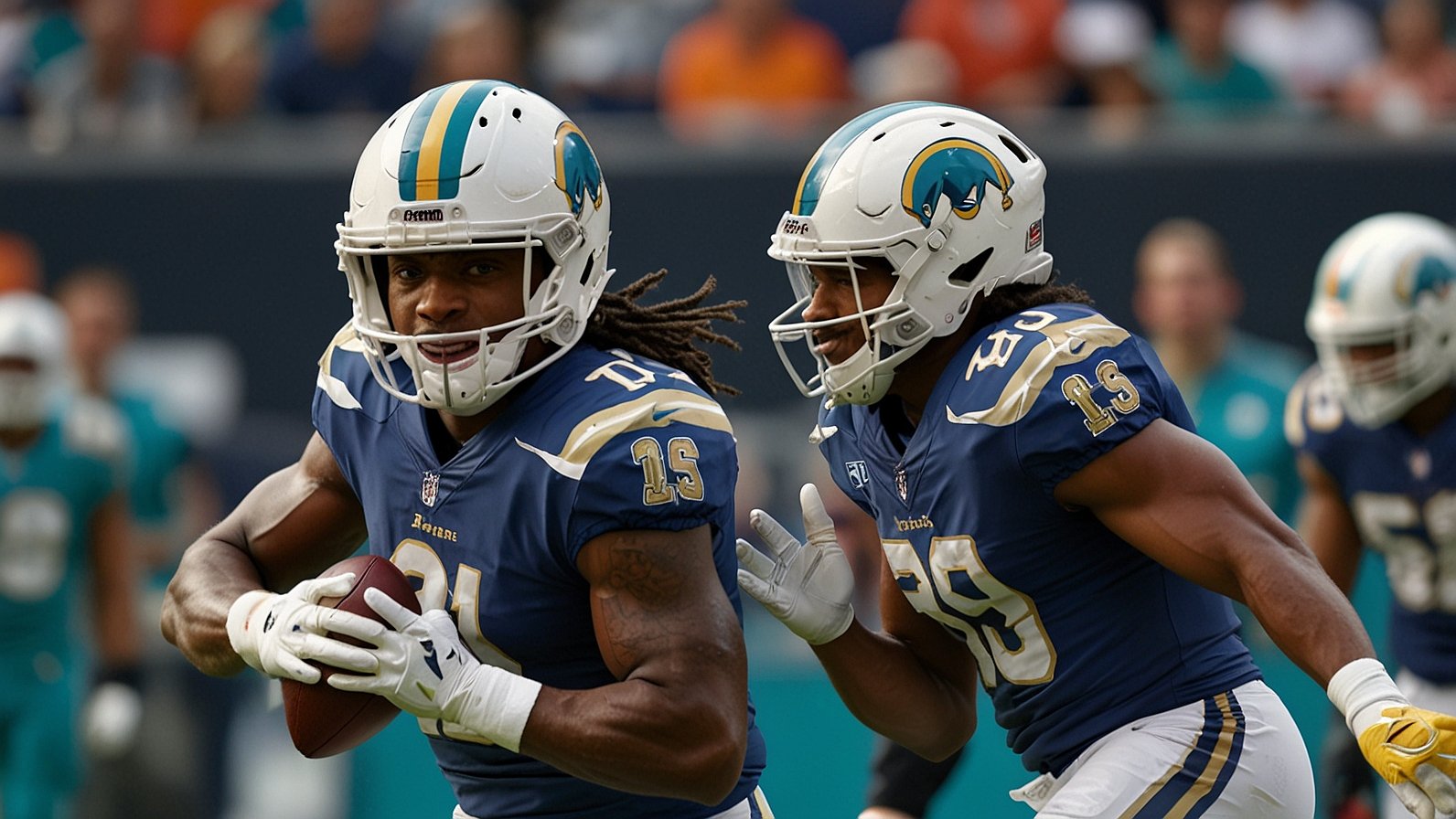Picture this: with 24 seconds on the clock, the Detroit Lions line up for a 54-yard field goal attempt to steal a win. The air is electric, the season hangs in the balance, and every single player’s performance over the last three hours has led to this one, heart-stopping moment. This is the drama of the NFC North, and it’s all captured in the cold, hard numbers of the box score. Today, we’re diving deep into the Minnesota Vikings vs Detroit Lions match player stats to go beyond the final score and uncover the individual performances that truly defined this epic divisional clash. We’ll break down who shone under the lights, who made the critical plays, and which unsung heroes tilted the field, using the official game data as our guide.
The Final Whistle: A Game of Inches
Before we get into the nitty-gritty of individual performances, let’s set the stage. This particular matchup, a 28-24 victory for the Lions, was a classic back-and-forth affair. It wasn’t a blowout defined by one superstar, but a gritty, hard-fought battle where every snap counted. The final drive, culminating in that dramatic field goal, was merely the exclamation point on a game filled with strategic twists, explosive plays, and crucial mistakes. By analyzing the player stats, we can re-live the narrative of the game, understanding not just what happened, but how and who made it happen.
Offensive Fireworks: A Tale of Two Quarterbacks
The offensive numbers tell a story of two franchises leaning heavily on their leaders, with very different support systems. The quarterback duel was the headline act, and the stats reveal a fascinating contrast in styles and efficiency.
Minnesota’s Aerial Assault
The Vikings’ offense lived and died through the air, a common theme for them this season.
- Kirk Cousins (QB): Cousins put up prolific numbers, finishing 31-of-41 for 284 yards and 2 touchdowns. However, the box score also shows one critical interception and two sacks. His completion percentage is impressive, but a deeper look at the play-by-play shows many of these were shorter, safer throws. His average of 6.9 yards per attempt indicates a methodical, dink-and-dunk approach that moved the chains but struggled to create explosive plays downfield, especially after an early injury to his top weapon.
- Justin Jefferson (WR): Speaking of which, Jefferson’s day was shockingly quiet before his exit. He was targeted 5 times but secured only 3 catches for 27 yards. This stat line was the game’s first major turning point, forcing the Vikings to completely re-calibrate their offensive identity.
- T.J. Hockenson (TE): With Jefferson limited, Hockenson became the undeniable safety valve and focal point. He was targeted a massive 13 times, hauling in 10 catches for 88 yards. This volume is a clear indicator of where Cousins’ confidence shifted, making Hockenson the engine of the Vikings’ passing attack for most of the contest.
- Alexander Mattison (RB): The ground game never got going. Mattison carried the ball 19 times for a mere 64 yards, averaging 3.4 yards per carry. This lack of a consistent rushing threat allowed the Lions’ defense to key in on the pass, especially in obvious passing situations later in the game.
Vikings Key Offensive Player Stats
| Player | Position | Stats |
|---|---|---|
| Kirk Cousins | QB | 31/41, 284 YDS, 2 TD, 1 INT |
| Alexander Mattison | RB | 19 CAR, 64 YDS |
| T.J. Hockenson | TE | 10 REC, 88 YDS (13 TGTS) |
| Justin Jefferson | WR | 3 REC, 27 YDS (5 TGTS) |
Detroit’s Balanced Attack
The Lions, in contrast, presented a much more balanced and unpredictable offensive attack.
- Jared Goff (QB): Goff was ruthlessly efficient, completing 26 of 38 passes for 265 yards, 1 touchdown, and, crucially, zero turnovers. His 106.9 passer rating dwarfed Cousins’ 89.6. Goff excelled at extending plays and finding secondary receivers, particularly on critical third downs.
- Amon-Ra St. Brown (WR): The Sun God was simply magnificent. He was targeted a game-high 13 times, catching 10 passes for 114 yards. St. Brown was the chain-mover for Detroit, consistently creating separation and providing a reliable target over the middle and on the perimeter.
- D’Andre Swift (RB): Swift provided the dynamic spark the Vikings lacked. He tallied 115 all-purpose yards, rushing 11 times for 51 yards and adding 6 receptions for 64 yards. His ability to break tackles in the open field added a layer to the Lions’ offense that Minnesota struggled to contain.
Defensive Standouts: Who Made the Stops?
While offense sells tickets, defense wins games. This matchup was no different, with several defenders putting their stamp on the outcome with game-altering plays.
Vikings’ Defensive Efforts
The Vikings’ defense had a “bend-don’t-break” mentality for most of the game, but ultimately broke at the worst possible time.
- Danielle Hunter (OLB): Hunter was a force off the edge. The official stats sheet credits him with 2 sacks and 3 tackles for a loss. He was consistently in the backfield, disrupting Goff’s timing and setting the edge against the run. He was far and away the most impactful player on the Minnesota defense.
- Harrison Smith (S): The veteran safety led the team in tackles with 9, a stat that often indicates the opposing offense was getting to the second level. He was physical in run support but was also part of a secondary that gave up several key completions in the final drive.
Lions’ Game-Changing Plays
The Lions’ defense didn’t have flashy overall numbers, but they made plays when it mattered most.
- Aidan Hutchinson (DE): The second-year star was a menace. While he only registered one sack on the stat sheet, he was credited with 5 quarterback hits and consistently pressured Cousins, hurrying throws and contributing to the critical interception.
- Jerry Jacobs (CB): Jacobs was responsible for the game’s only turnover, a diving interception in the third quarter that halted a promising Vikings drive. In a one-score game, this single takeaway was worth its weight in gold.
- Alex Anzalone (LB): The linebacker was everywhere, recording 8 tackles and a key pass breakup. He was instrumental in limiting the Vikings’ intermediate passing game and was a sure tackler in the open field.
Special Teams: The Silent Assassin
Never underestimate the impact of the third phase of the game. In a tight contest, a single special teams play can be the difference between euphoria and despair.
- Greg Joseph (K – MIN): Joseph was perfect on the day, connecting on his only field goal attempt (a 46-yarder) and all three extra points. He did his job flawlessly.
- Ryan Wright (P – MIN): Wright had a strong day, pinning the Lions inside their 20-yard line on two occasions, flipping field position at critical junctures.
- Riley Patterson (K – DET): And then, there’s the man of the moment. Patterson’s stats for the day were simple: 1/1 on field goals, with a long of 54. But that one make, as time expired, was everything. It was the culmination of the entire team’s effort and the defining play of the game.
The Turning Point: A Story in the Play-by-Play
If you look at the raw Minnesota Vikings vs Detroit Lions match player stats, you see two relatively even teams. The total yards were close, first downs were similar, and time of possession was nearly identical. So, what was the real turning point?
Beyond the final kick, it was the injury to Justin Jefferson. The play-by-play data shows a dramatic shift in the Vikings’ offensive efficiency and play-calling after he left the game. Their drives became longer, more methodical, and ultimately, less likely to end in touchdowns. The Lions’ defense, no longer fearing the deep threat, could play more aggressively in the short and intermediate zones, which directly led to increased pressure on Kirk Cousins and the game-sealing interception. This single injury, reflected in Jefferson’s paltry final stat line, was the undercurrent that shaped the entire second half.
3 Actionable Takeaways from the Stats
- Volume Isn’t Everything: Kirk Cousins completed 31 passes, but his low yards-per-attempt average shows that efficiency and explosive plays often matter more than just completions.
- Balance is Key: The Lions’ ability to consistently run the ball (Swift) and attack with a dynamic receiver (St. Brown) made them less predictable and more dangerous than the one-dimensional Vikings.
- One Play Can Define a Game: Jerry Jacobs’ interception and Riley Patterson’s field goal are proof that you don’t need 10 tackles or 100 receiving yards to be the most valuable player on the field. Do your job, and be ready for your moment.
The numbers from this classic NFC North battle tell a rich, nuanced story of resilience, adaptation, and clutch performance. It was a game where stars were muted, new heroes emerged, and the final score was a direct result of the cumulative efforts detailed in the box score.
What was the most surprising stat line to you? Was there an under-the-radar player you think made a bigger impact than the numbers show? Share your thoughts and your own analysis in the comments below!
You May Also Like: Breaking Down the New York Jets vs Minnesota Vikings Match Player Stats
FAQs
Who led the Lions in receiving yards according to the Minnesota Vikings vs Detroit Lions match player stats?
Amon-Ra St. Brown was the leading receiver for the Lions, hauling in 10 catches for 114 yards, consistently moving the chains for their offense.
How many sacks did the Vikings’ defense record?
The Vikings’ defense sacked Jared Goff twice, with both sacks credited to star edge rusher Danielle Hunter.
Did Justin Jefferson’s injury significantly impact the game’s outcome?
Absolutely. The play-by-play and target share data show a stark decline in the Vikings’ offensive explosiveness and efficiency after Jefferson left the game, forcing them to become one-dimensional.
Which quarterback had a better passer rating, Cousins or Goff?
Jared Goff had a significantly better passer rating of 106.9, compared to Kirk Cousins’ 89.6, largely due to Goff’s higher efficiency and lack of turnovers.
Who was the leading rusher in the game?
The Vikings’ Alexander Mattison was the leading rusher by volume with 64 yards, but the Lions’ D’Andre Swift was more efficient and impactful with 51 rushing yards and another 64 through the air.
How many turnovers did each team have?
The game was remarkably clean, with the Vikings committing the only turnover—a critical interception thrown by Kirk Cousins.
Which linebacker led the game in tackles?
Vikings safety Harrison Smith led all players with 9 total tackles, while Lions linebacker Alex Anzalone led his team with 8.










